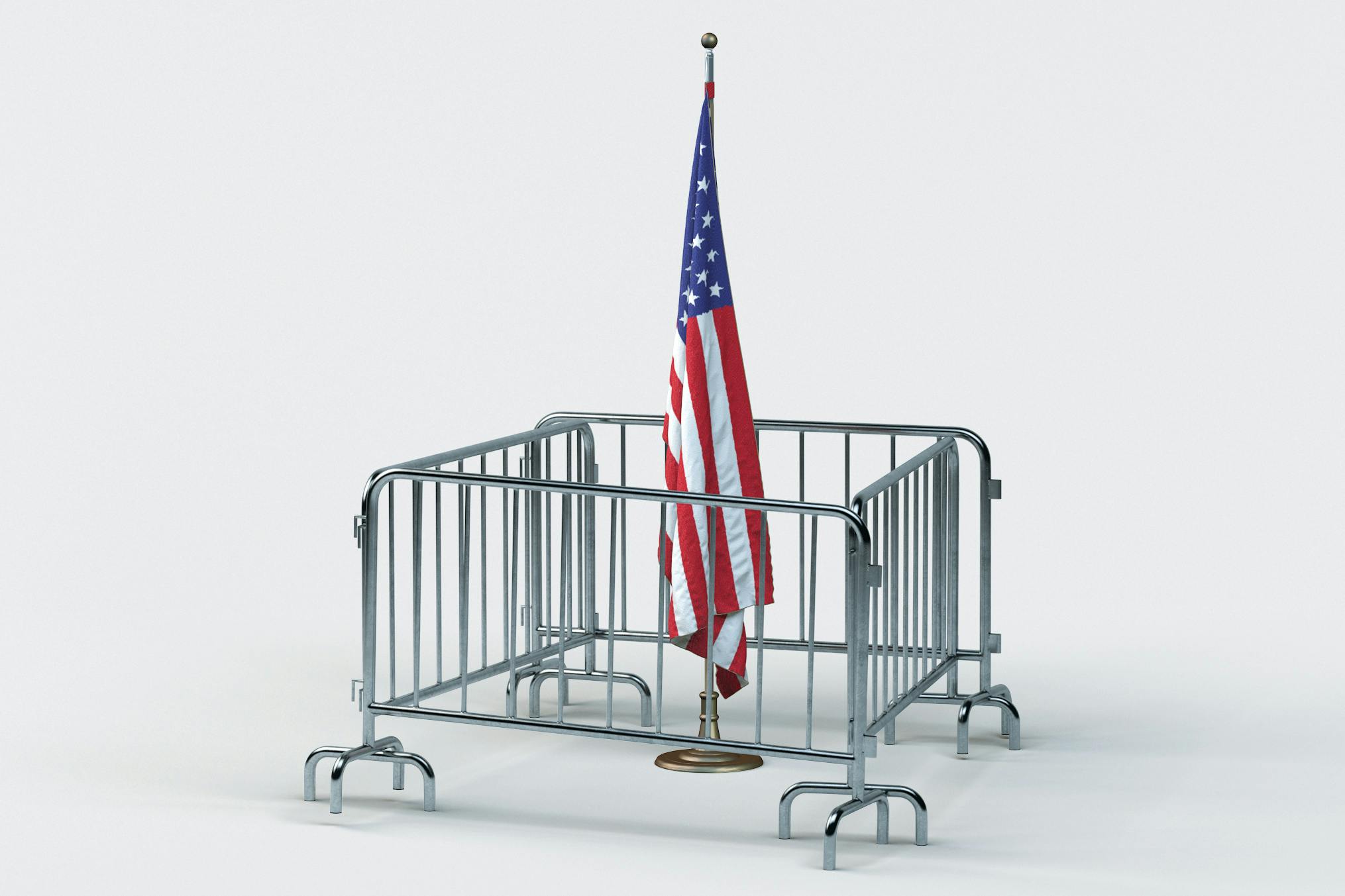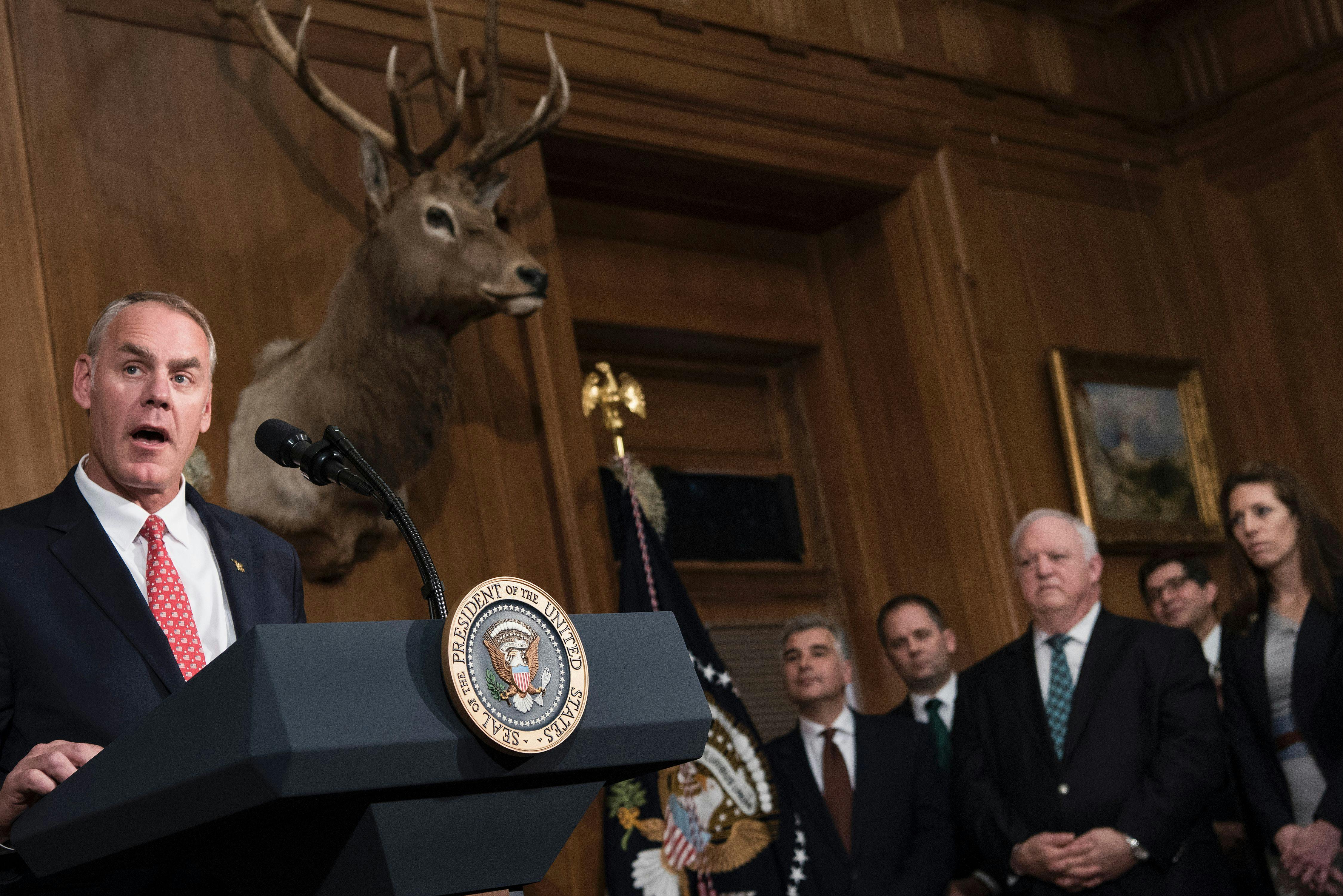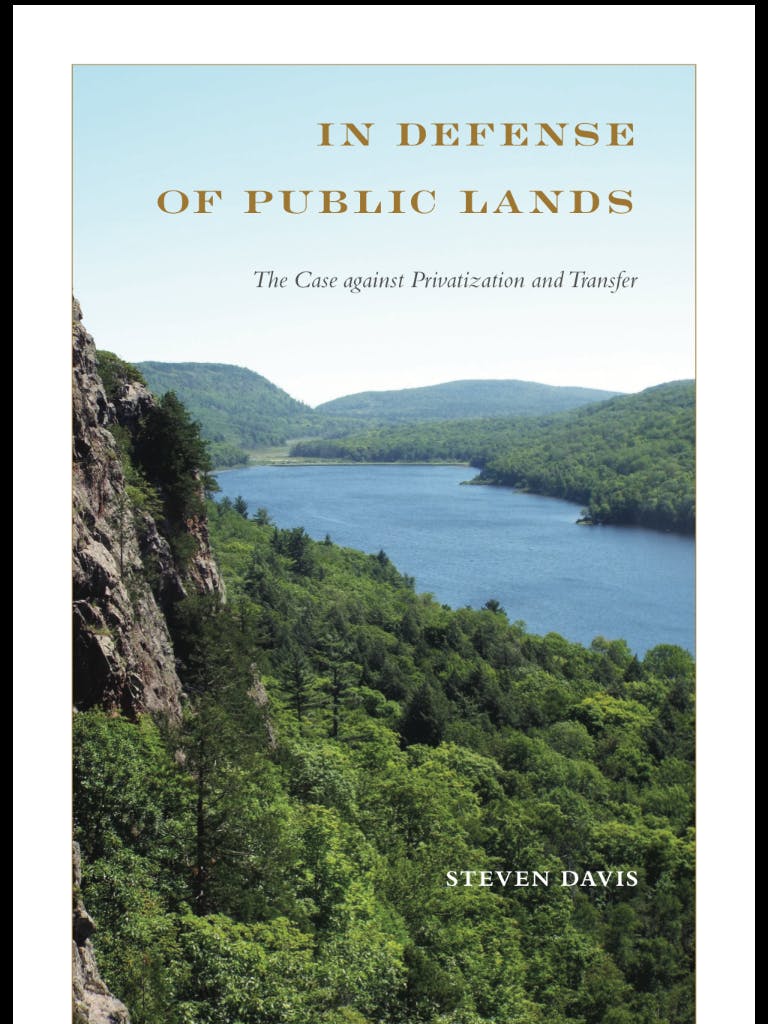

In April 2016, Presidential candidate Donald Trump promised to “surrender this country or its people to the false song of globalism” no longer. “I am skeptical,” he said in a speech at the Mayflower Hotel in Washington, “of international unions that tie us up and bring America down.” Two months later, campaigning against Hillary Clinton, Trump reiterated: “Globalization has made the financial elite who donate to politicians very wealthy. But it has left millions of our workers with nothing but poverty and heartache.”
As president, Trump has made good on his promises, with a variety of actions: He has pulled the United States out of the Trans-Pacific Partnership; announced that he would do the same with the Paris climate agreement; held up nominations to the World Trade Organization; begun renegotiating the North American Free Trade Agreement; instituted tariffs on steel and aluminum imports; targeted Chinese trade and investment; and threatened to shut down the government if Congress doesn’t fund a great wall with Mexico.
Democrats and some of Trump’s fellow Republicans have roundly condemned many of these moves as either useless or of questionable utility. And they were often right to do so: His decision to dump the Paris accord or separate immigrant children from their parents at the border, or even to withdraw from the TPP, would do little to end the poverty and heartache that he believes globalization has caused. Still, whether wittingly or not, Trump’s attack on globalization has struck at profound failings of American economic policy, and liberals who might otherwise dismiss Trump would do well to acknowledge them. If their goal is to create a kinder, more generous, more livable country without gaping differences in income and power, they must consider globalization’s downsides.
One of the first economists to warn against globalization was Harvard’s Dani Rodrik. In his 1997 book, Has Globalization Gone Too Far?, Rodrik argued that globalization would empower mobile businesses at the expense of their workers and threaten the welfare state.
At the time, his claims were highly controversial. Throughout the 1990s, Bill Clinton had made the case for globalization. As he won approval for NAFTA and for America’s entry into the WTO, he urged Americans to “make change our friend” and to “embrace the inexorable logic of globalization.” New York Times columnist Thomas Friedman, another champion of globalization, argued that it was making the world “flat.” Many believed that by enriching Mexicans, NAFTA would stem the flow of unauthorized immigrants to the United States, and that China’s entrance into the WTO would propel the country toward free-market democracy. Meanwhile, the free movement of capital and currencies would guard against instability and boost prosperity.
None of these contentions proved correct. Rather than creating a global free market that was stable and consistent, financial globalization instead contributed to a succession of major crises. Between 1945 and 1973, while the Bretton Woods agreement still regulated currency values, no crises occurred, but since the 1980s, there have been at least 13, climaxing in the Great Recession of 2008.
After the Recession, establishment economists began to echo Rodrik’s early warnings. Was globalization creating inequality? Because of the rapid growth of China and India, globalization did contribute purely on average to a decline in global inequality. But the gap between rich and poor nations widened, and as former World Bank chief economist François Bourguignon has noted, within the United States, as well as much of Europe, and even in China and India, inequality rose between 1990 and 2010.
Under the new order, corporations were competing to find countries where they could pay workers lower wages and governments fewer taxes. As Trump pointed out during the 2016 campaign, Nabisco had cut its labor costs by moving a food processing plant from Chicago to Salinas, Mexico, laying off 600 workers. In 2011, Samsonite had moved its headquarters from Massachusetts to Luxembourg to reduce its tax bill. Hoping to keep their businesses globally competitive and their rich at home, advanced capitalist countries slashed taxes. In the 1980s, most had corporate tax rates higher than 46 percent. By 2011, the 34 countries of the OECD had cut them to an average of 25 percent. With less money coming into government coffers, elected officials were forced to cut public expenditures on health care, education, infrastructure, and the environment. Globalization, in other words, has begun to undermine the fundamental promise of social democracy in Europe and of post–New Deal liberalism in the United States: to provide economic and social security and upward mobility.
Globalization’s effect on the United States was particularly pronounced. NAFTA not only encouraged American auto companies to move out of the Midwest; it also, as labor economist Kate Bronfenbrenner has argued, allowed employers to use the threat of moving to Mexico to undercut private-sector unions. (When the United Auto Workers tried to organize one Michigan auto parts plant in 1995, managers parked 13 flatbed trucks with signs reading “MEXICO TRANSFER JOB” for workers to see.) The decision to sponsor China for the WTO had an even more dramatic effect. Under the WTO’s umbrella, China was able to use currency manipulation and hidden export subsidies to drive American firms out of business or abroad. According to a study released by the National Bureau of Economic Research, its entry into the WTO cost Americans as many as 2.4 million jobs between 1999 and 2011.
The jury is still out on whether Donald Trump is helping the voters who have lost jobs to globalization. Will his tariffs on Chinese imports lead the Chinese to abandon the strategy of dumping their products at below cost? Or will the tariffs simply damage American companies dependent on foreign steel? Mexico recently agreed to impose tariffs on cars made with less than 75 percent North American parts. But will this bolster U.S. car manufacturers? Or, as trade expert Alan Tonelson has charged, is the 2.5 percent tariff too low to be effective? Trump may not have the answers, but for all his casual bigotry and corruption, at least he has fairly accurately identified the damage wrought by globalization.
Even so, many Democratic policy intellectuals have peremptorily rejected his initiatives. Last July, when Trump criticized American business leaders for being “more for their business than they are for the United States,” he was accused by Aaron Rupar of ThinkProgress—an offshoot of the liberal Center for American Progress—of striking “a fascistic note while criticizing American business leaders [for] not doing more about unfair trade deals.” Robert Litan of the Brookings Institution compared Trump’s trade policies to Herbert Hoover’s, and in The Atlantic, Annie Lowrey accused Trump of initiating a “pointless, destructive round of mercantilism.” Destructive? Maybe. Pointless? Absolutely not. On China, in particular, eight years of international appeals under the Obama administration had done little to stop the Chinese from undercutting American industries.
Some Democrats, like Senate Minority Leader Chuck Schumer, have encouraged, without fully endorsing, Trump’s trade initiatives and his attempt to strengthen the Committee on Foreign Investment in the United States, which can block foreign takeovers of critical American firms. And instead of dismissing Trump’s efforts, policy experts at the Economic Policy Institute and the Information Technology and Innovation Foundation have devised their own responses to Chinese mercantilism. (Rob Scott at EPI stresses pressuring China to accede to a currency realignment.) But these solutions rarely make it to the top of Democrats’ political agenda, subsumed instead by the emphasis on Trump’s personal malfeasance and most egregious social policies.
Democrats can and should promise to help the people hurt by globalization, rather than leaving it to the president. After all, on certain key matters, Trump has made the impacts of globalization worse. By pulling out of the Paris agreement and propping up coal, he is posing an immediate health risk to the silent majority he claims to speak for. By stacking the National Labor Relations Board with anti-union appointees, he is depriving workers of their best means of resisting globalization. And by almost halving corporate taxes, Trump has fueled the global race to the bottom among corporate managers and money movers, thereby depriving the federal government of revenue it needs for social spending.
Some American workers may be the incidental beneficiaries of Trump’s attack on globalization. But many will be casualties. Democrats need to fashion remedies that speak to those workers. They don’t need to reject multilateral trade deals and international organizations. They do have to insist that those organizations operate in the national interest—not, as they have in the past, in the interest of footloose corporations and countries willing to bend the rules to their own advantage.

If ever there was a time for a defense of the federal public lands system, it is now. Donald Trump’s Interior Secretary, Ryan Zinke, has expressed his contempt for the preferences of the American people by presiding over the largest rescissions of federal land protections in history. In 2017, a huge majority of Americans–99.2 percent by one measure—were in favor of the preservation of Utah’s Bears Ears and Grand Staircase-Escalante national monuments. Yet President Donald Trump, thirteen months after taking office, and acting on Zinke’s recommendations, reduced them in size by close to two million acres.
Right-wing think tanks such as the Heritage Institute, Cato Institute, Hoover Institution, Reason Foundation, and the American Legislative Exchange Council applauded the decision. These groups, many of them funded by energy industry magnates Charles and David Koch, have been at the forefront of claims that public lands, burdened with environmental regulations, are a drain on the American economy.
 In Defense of Public Lands: The Case against Privatization and TransferTemple University Press 264, pp., $28.45
In Defense of Public Lands: The Case against Privatization and TransferTemple University Press 264, pp., $28.45 The ultimate goal of these groups, however, is not merely deregulation but a radical transformation of the more-than-century-old system of public ownership of hundreds of millions of acres of land, mostly in the Western states. Public lands, they say, should be privatized, sold off to the highest bidder for the best use, be it logging, cattle grazing, or exploitation for oil, gas, or hard-rock minerals. Subjected to market forces, the land, in this view, will yield a higher return to society than the current system that “locks it up” under the auspices of the National Park Service, the Bureau of Land Management, and the Forest Service.
These three land management entities, along with other federal agencies, oversee approximately one-third of all land in the country. No matter that overwhelming numbers of Americans have decided that they like the Park Service, the BLM, and Forest Service and want to keep the land as a vast commons.
A compelling rejoinder to the noxiously anti-democratic program of land privatizers is Steven Davis’s new book In Defense of Public Lands: The Case against Privatization and Transfer. The chief argument for privatization, writes Davis, is based on a reductionist calculation of the operating budget of public lands agencies compared with the revenue those lands produce. Government statistics show that it costs ten times more to run the Forest Service than the service receives from users of the national forests. Therefore, goes the logic, junk it. In fact, the public lands system as a whole operates at a significant loss. In 2014, total appropriations for all federal land agencies came to $11 billion while revenue was only $1 billion. From the national parks to the national forests and monuments to the wildlife refuges operated by the U.S. Fish and Wildlife Service, it’s all money down the drain. They are economically inefficient. Therefore, the nation ought to abolish them. “To the advocates of privatization,” writes Davis, “the government’s management of public land is the main culprit in the thwarting of rational, efficient, and productive resource policy.”
I called Davis at his home in Madison, Wisconsin, where he is a professor of political science at Edgewood College, to ask about the genesis of his book. “My project was to examine and dismantle the arguments that endlessly spew forth from rightwing think tanks and Koch-endowed professorships. There is quite an academic literature out there that begs refutation,” he told me. “The privatizers fancy themselves as rational and analytical, and I wanted to show that even on their own turf, they are dead wrong, empirically.”
The world as envisioned by libertarian economists, Davis argues, is determined by a stunted creature that he calls “Homo economicus.” Bleakly isolated from his fellow man, an atomized free individual in the marketplace, Homo economicus decides what is good for society via decisions based exclusively on profit and loss. But society isn’t made up of free-floating atoms. We continually engage in collective decisions for the greater good, regardless of cost. That’s why we fund public schools and libraries, the Postal Service, the Veterans Administration, highways, and the like.
There are preferences, values, and outcomes we seek as a society that transcend the strictures of the market. These are called the public good. Markets, Davis argues, can’t be relied on to provide that, nor should it be expected to. Standing against Homo economicus is “Homo politicus,” asserting that the nation make choices together through messy, conflicted, difficult democratic processes. And one of those choices is to maintain public lands regardless of what the market tells us of its value. Davis quotes philosopher Mark Sagoff: “When citizens and their representatives deliberate in moral and aesthetic terms about the fate of the environment, they often reach conclusions utterly at odds with those they would reach if they considered only the economic aspects.”
On the other hand, says Davis, it is useful—simply for the purpose of trapping libertarians in the narrow confines of their ideology—to establish a market value of the ecosystem services that publicly owned lands provide.
Biologists are extremely uncomfortable with the commodifying of ecosystems and wildlife, and so is Davis, given that it reduces the functions of nature merely to what it does for human beings. But in a market environment, it’s possible to look at public lands as an inestimable treasure, worth trillions of dollars, “a kind of fountain,” he writes, “that pours out a continuous flow of precious things.” Essential assets such as photosynthesis and biomass production, carbon sequestration, climate regulation, clean air, fresh water, water retention and filtration, soil retention, nutrient cycling, pollination—these are all products of America’s public lands. Economists may not value these “free” products, but if they did, the valuation would shatter the notion that public land is a money-loser.
Given the total cost of maintaining public lands is just $11 billion a year, it’s a bargain in exchange for those trillions of dollars of ecosystem services. “It’s the greatest bargain the American people have ever made,” writes Davis. Hell, the United States spent $20 billion alone on air-conditioning in military bases in Iraq during the height of the war. And what did that investment produce for the American people?
What Davis has accomplished with his book is a much-needed public service to light the fires of populist indignation. That he so ably debunks the privatizers’ claims provides ammunition to those interested in exposing what the corporate intellectuals at Cato, Heritage, and others really are: enemies of a beloved American institution, our great commons of land.

No comments :
Post a Comment